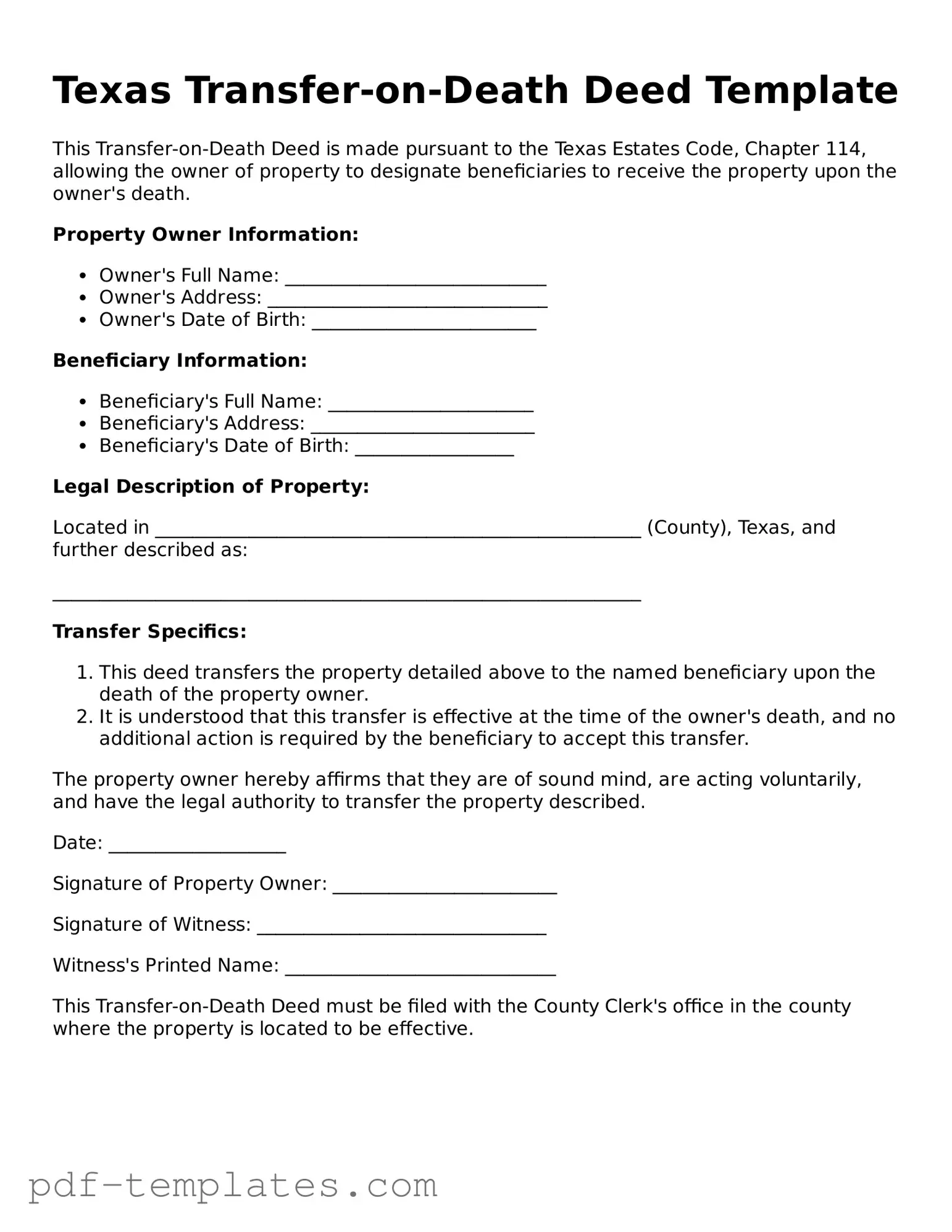Official Transfer-on-Death Deed Template for Texas State
The Texas Transfer-on-Death Deed form is a legal document that allows property owners to transfer their real estate to designated beneficiaries upon their death, bypassing the probate process. This deed provides a straightforward way to ensure that loved ones receive property without the complications often associated with inheritance. To simplify the process, consider filling out the form by clicking the button below.
Customize Form Now
